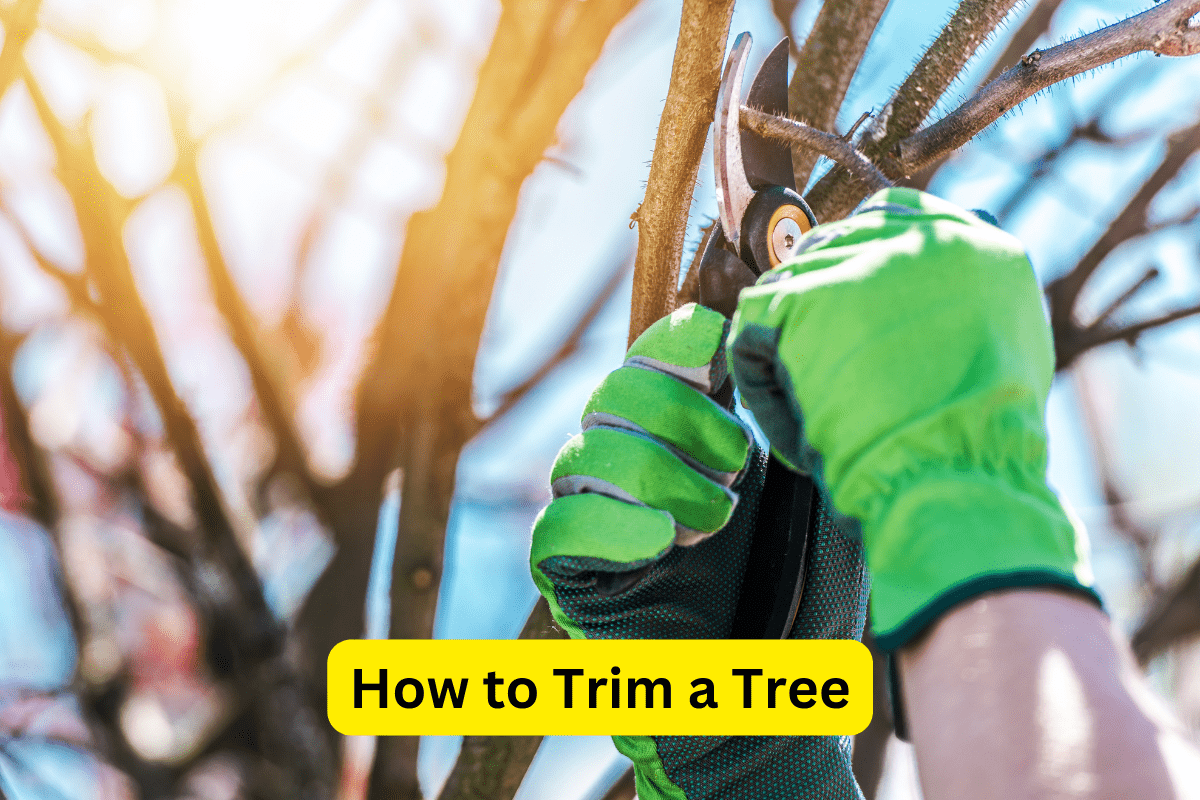
All trees require trimming at some point to help them increase their strength and longevity as well as reduce the risk of damage during severe weather. But before you pull out the ladder and pruning shears, you’ll need to know how to trim a tree because improper trimming can do more harm than good.
In this article:
- Why is it Important to Properly Trim a Tree?
- Steps to Properly Trimming a Tree
- Tools Needed For Tree Trimming
- Pruning Types
- Pruning Young Trees vs. Mature Trees
- When is the Best Time of Year to Trim a Tree?
- Tree Trimming Tips
- FAQ About Tree Trimming
Why is it Important to Properly Trim a Tree?
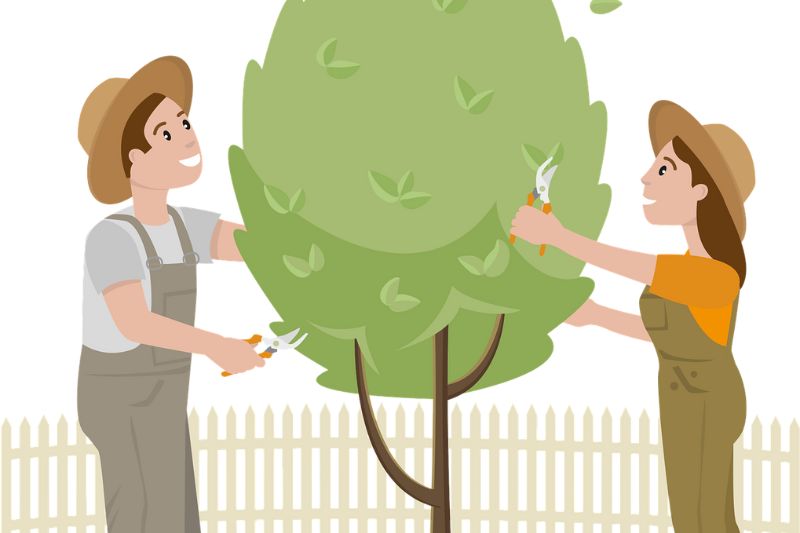
Trimming and pruning influence the way the tree grows, and with proper care and pruning techniques, trees can maintain a branch structure that is ideal for them and lower the risk of broken limbs or falling branches. A properly pruned and the trimmed tree will not have poor weight distribution that could cause problems later on. Structural pruning also improves the general health and wellness of the tree.
Steps to Properly Trimming a Tree
TRIM off any suckers or water sprouts growing at the base of the trunk. These weak, weedy-looking growths form at the base of the trunk and only steal energy from the tree. So, it’s important to get rid of them when you see them forming.
REMOVE all the dying or dead branches since it will make it easier to spot the limbs that need to be pruned next. Dying branches sap the energy from the tree that would be better used on healthy limbs.
PRUNE away unwanted or hazardous branches that are hanging low, touching your house or powerlines, or are a potential safety hazard in any way.
REMOVE any damaged or weak branches. Tree branches that have been damaged in a storm or are otherwise broken or weakened are an invitation for pests and disease, could become hazardous, and can also be a place where water settles.
TRIM overlapping branches that rub together. Overlapping branches can damage each other over time. If both branches are damaged, remove them. Otherwise, cut off the smallest branch or the most damaged one.
LIGHTLY PRUNE the upper limbs for shape.
Tools Needed For Tree Trimming
Hand Pruner
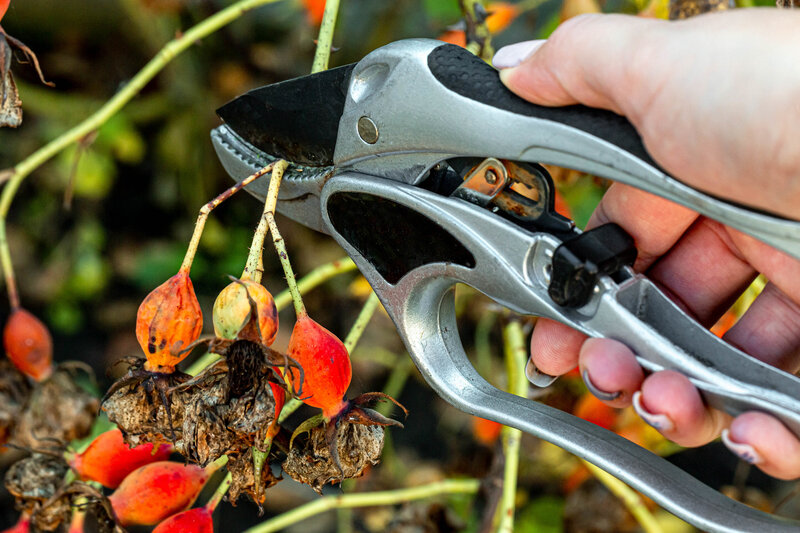
If you’re cutting branches 1 inch in diameter or less, you should use hand pruners. For cleaner cuts, you should use a bypass pruner, which has a curved cutting blade and cust like a pair of scissors.
Lopper
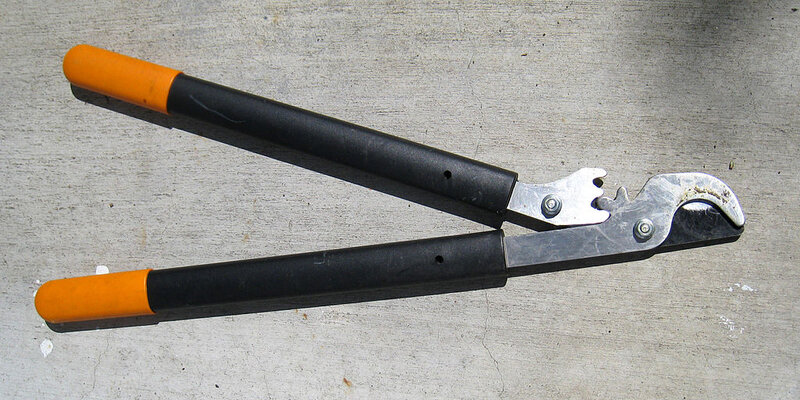
Lopping shears, or loppers, are good for cutting branches 2 inches in diameter and will usually specify what branch size they cut on the label. You should look for loppers with handles in varying lengths, including ones that telescope for extended reach.
Pruning Saw
Pruning saw blades are tempered metal and designed to cut branches with a diameter of 3 inches, although you can use them to cut slightly larger branches. Pruning saws cut on both the pull and push strokes so that every movement of the saw cuts.
Rope Saw
Rope saws allow you to stay on the ground while cutting branches that are up to 25 feet high. A rope saw uses a chain-type cutting blade and is ideal for cutting branches 5 inches in diameter, although it can also cut through thicker branches.
Chainsaw
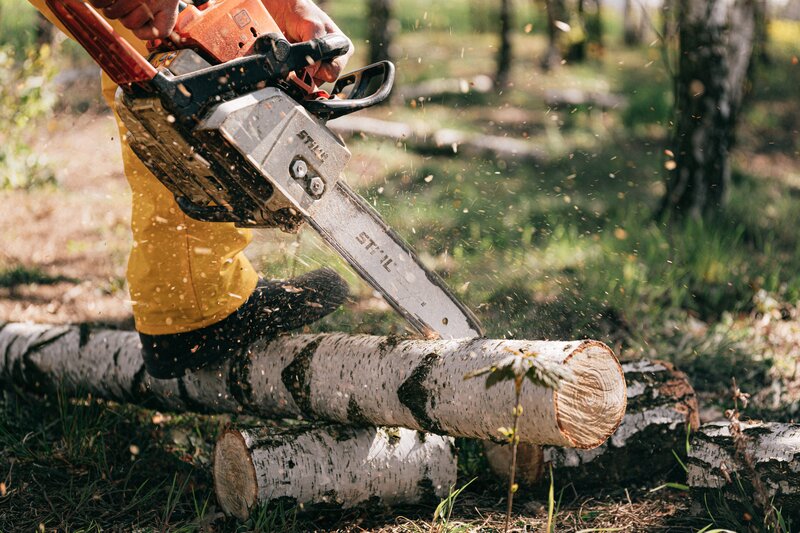
A chainsaw provides a clean cut when removing limbs that are thicker than 3 inches in diameter. It’s highly recommended that you contact a certified arborist if your pruning job requires a chainsaw.
Pole Pruner
If you need to cut branches that are out of your reach, pole pruners are the way to go. For tackling larger branches, you will need a pole pruner that offers interchangeable cutting tools for the pruning head, like a pole saw or a bypass pruner.
Pruning types
Thinning Cut / Removal Cut
Thinning cuts, also known as removal cuts, remove a side branch back to the larger parent branch or trunk. Thinning cuts have the advantage of preserving a strong defense against decay. They reduce the density of the tree canopy but have little to no impact on the height of the tree. Thinning cuts allow more sunlight into the canopy, which encourages the growth of interior branches.
Reduction Cut
Reduction cuts remove a larger branch back to a smaller-diameter side branch and are commonly used in training young trees. They are the only type of cut that will significantly lower a tree’s height and will leave the branch with a weak defense against decay. Because of this, they are discouraged from being used on mature, large trees or on limbs larger than 2 inches in diameter.
Heading Cut
Heading cuts remove the growing tip of small branches, resulting in more dense growth. These types of cuts are undesirable for shade trees since topping a tree with heading cuts give a surge of structurally unsound new growth which is often prone to storm damage and decreases the overall health of the tree.
Pruning Young Trees vs. Mature Trees
Young and mature trees require different methods of pruning. You prune young trees to reach a desired shape or form since, as they’re pruned, they grow in the direction they’re shaped. Mature trees are pruned for the purpose of changing the canopy that has gotten too big, is in the way, or is hanging too low.
Young Trees
- Make purposeful cuts to avoid the tree being damaged or growing in the wrong direction.
- Cut where necessary since small cuts aren’t as risky as larger ones.
- Find the branch collar and cut just outside it to avoid damage to the trunk.
Mature Trees
- Cut full branches near the collar and not near the top.
- Saw halfway through with an upward motion and the same downward.
- Saws are necessary for larger branches instead of pruning tools.
When is the Best Time of Year to Trim a Tree?
With a few exceptions, the late fall and early spring of November through March are the best time to prune trees. These dormant months are crucial for these reasons:
- Due to the lack of leaves, there is better visibility when pruning.
- Proper wound closure heightens in late winter, which prevents the spread of decay.
- An infestation of pests and pathogens are less likely to enter trees.
Tree Trimming Tips
- Trim your trees during their dormant season.
- Protect the main trunk of young trees from competition. If you notice a young tree starting to split into two trunks, cut away one of the trunks, especially if they are crooked, defective, or lopsided. Allowing both to grow will weaken the tree, making it prone to collapse.
- Prune lower limbs to expose more trunk.
- Never top, or drastically cut back, trunks with a chainsaw because it ruins the form and causes problems.
- When removing an entire limb, avoid cutting too close to the trunk. Most limbs form a natural collar at the fork.
- Prune branches when they are young since they are much easier to manage and don’t leave large wounds.
- Be conscientious about the size of the branch that you are going to remove. If it is between 5-10 centimeters in diameter, you might not want to remove it.
FAQ About Tree Trimming
Trees will need plenty of water to help them heal, so you should water regularly. You should also fertilize to promote new growth and aerate compacted soil around the tree for air circulation.
Pruning sealers can aid the healing of pruning cuts and minimize sap loss. These products are typically petroleum-based, but there are some natural tree sealers with ingredients like collagen and aloe gel.
Prune all branches above four feet growing toward the tree’s center. Side branches growing four feet off the ground from the main trunk should be cut. Always cut back to a larger branch of the trunk, and don’t leave stubs.
When to Hire a Tree Care Pro
If you’re not confident in your ability to safely trim your trees without losing necessary limbs attached to you or your tree, or would rather just spend your time doing things you enjoy, then you might be happier hiring a reliable tree care expert.
If you need an experienced tree service to handle all of your tree, shrub, and lawn maintenance needs, check out Lawnstarter’s extensive list of landscaping contractors in your area.
Main Photo Credit: welcomia / Canva